Anyone who’s ever created content marketing collateral knows to include internal and external links. This digital marketing best practice is in place because it lifts your content in search engine rankings. If you’re looking to improve your link-building strategy, take a look at how to create backlinks to your site, examples of a backlink, and more from Mirabel’s Marketing Manager.
What is a Backlink?
A backlink is created when one website links to another. In this to-from scenario, when Website A links to Website B, Website A creates an external link to Website B. Website B now has a backlink from Website A. Backlinks can be from web copy, blogs, email campaigns, and so on.
Backlinks are an important part of your digital marketing strategy because they represent a “vote of confidence” from one website to another, according to Moz. Backlinks are like vouchers from other websites. Search engines like Google use these vouchers to find and rank the best content.
“If many sites link to the same webpage or website, search engines … infer that content is worth linking to, and therefore also worth surfacing on a SERP (Search Engine Results Page). Earning these backlinks can have a positive effect on a site’s ranking position or search visibility.”
However, backlinks for SEO are not a quick win. Earning backlinks to your site is a long-term digital marketing strategy, especially for new websites and those looking to expand their SEO efforts.
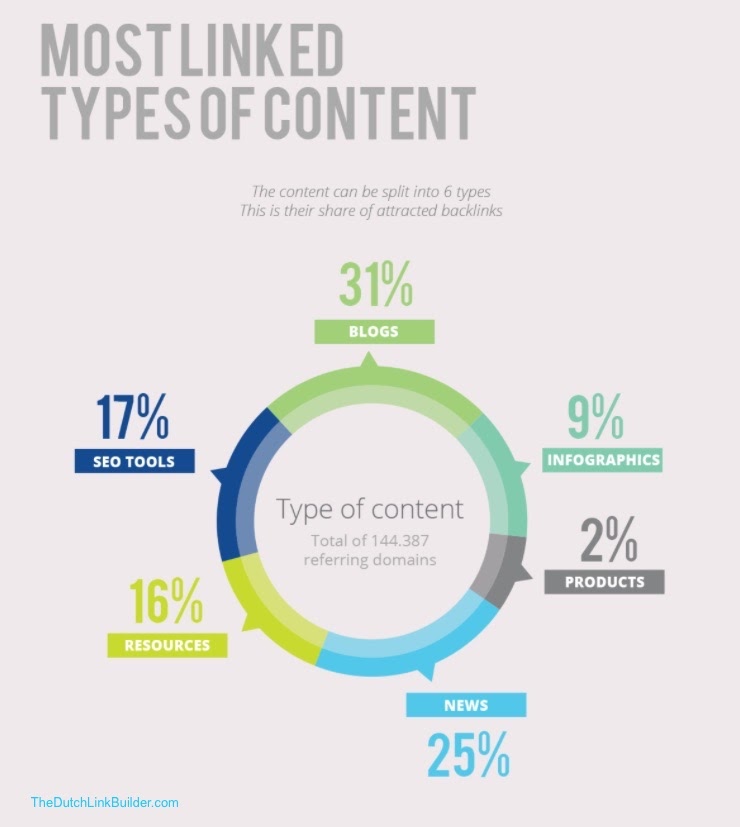

Many people don’t know where to begin with adding or increasing backlinks to your site. Our recommendation is to begin with a competitor analysis. Use backlink tools for SEO to examine a competitor’s backlink profile. Examine which pages and domains are linking back to their website. This will help you gain insight on which domains you should be targeting for your backlink strategy.
An Example of a Backlink
Backlinks are one of the most valuable ranking factors on Google. Through thousands of algorithm changes, Google determines and prioritizes two types of backlinks: dofollow and nofollow backlinks. A website visitor will never see the difference between dofollow and nofollow backlinks. The difference lies in the source code.
dofollow Backlinks
dofollow is the most common and valuable type of backlink. They’re the default state of a link, and they tell Google that the content on the other side of the link is important and rankworthy. In source code, an example of this backlink looks like this:
<a href=”https://mirabelsmarketingmanager.com”>this link</a>
nofollow Backlinks
nofollow is a less common and less valuable type of backlink. They’re used to tell search engines to ignore a link.
According to Google’s official definition, “Use the nofollow value when other values don’t apply, and you’d rather Google not associate your site with, or crawl the linked page from, your site.”
In source code, it’s nearly identical to dofollow backlinks with one big difference: the nofollow tag. An example of this backlink looks like this:
<a href=”https://mirabelsmarketingmanager.com” rel=“nofollow”>this link</a>
According to The Official SpyFu Blog, “You’ll most often get these types of backlinks from websites where you can upload your own links and content, because those websites don’t want to vouch for the accuracy of your content.
Here are a few [internet spaces] that nofollow links commonly come from:
- Social media websites, such as Facebook, Twitter, and LinkedIn
- Blog comments
- Content aggregation websites, such as Scoop It
- Q&A websites, such as Quora
- Forums, such as Reddit
- Press releases
In addition to all of those, many high-authority websites, like Wikipedia and the Huffington Post, use nofollow links to reduce the number of spammy backlink requests they receive.”
While nofollow links are less common and less valuable in ranking for SEO, for a healthy website, Google wants to see both types of backlinks. If you’re linking to intelligent, helpful content, dofollow links are best.
So, when should you use a nofollow tag? Here are a few common scenarios when you should add nofollow backlinks to your site:
The Best Way to Create Backlinks
You understand the importance of backlinks in your digital marketing strategy. You’re familiar with examples of backlinks. So, how do you add backlinks to your site? If you’re looking to increase backlinks for SEO, Mirabel’s Marketing Manager counts down the best ways to create backlinks to your site:
Help A Reporter Out (HARO)
From public relations giant Cision comes Help A Reporter Out. HARO connects journalists seeking quotes for their digital or print content to those who will provide them.
The service emails you three times daily with lists of categorized inquiries. If you find a relevant inquiry, send an email to the respective journalist with your response. While a time-consuming, long-term strategy, being a source through HARO is a great way to increase backlinks to your website.


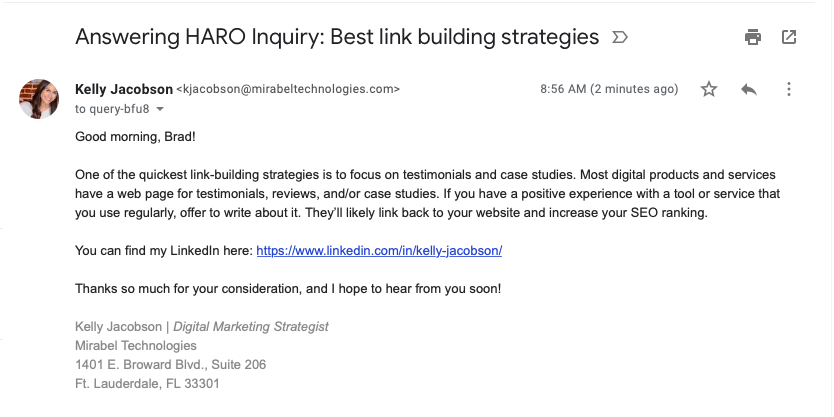

Outdated Content
Companies constantly change their website domain, which means that their content that’s backlinked is outdated. The link is broken because the domain changed. This gives you the perfect opportunity to increase backlinks to your website. Here’s how to get the most out of this backlinking strategy:
- Find websites in your industry that changed names, moved to a new URL, stopped offering a product or service, stopped updating content, or shut down.
- Find websites linking to the outdated link. Use backlink tools for SEO to check out all the sites that still link to the outdated content. Focus on those with the highest domain authority.
- Reach out to those who linked to the outdated content. Gently tell them that there’s an error when you click a link, and offer your resource as a replacement.
This backlinking strategy takes time and effort, but you’re building more than just backlinks. You’re building relationships with relevant industry leaders. Take your time, and make it count.
Influencer Marketing
Marketing buzzwords have turned into the top ranking keywords. “Best <keyword> of <year>” and “top <keyword> in the <industry>” are easy to search and should yield the best of the best. That’s where influencer marketing comes in.
Blogs, listicles, and authority resource pages aggregate the most recognizable and well-reviewed content. They’re a top source for backlinks, because that’s their sole purpose. If you can land on these posts, you’re going to increase backlinks for SEO.
To find these posts relevant to your industry, search in quotations:
- Helpful resources
- Additional resources
- Further reading
- Useful resources
(The quotations ensure that the word is found in the search.) After that, tack on your relevant keywords. For example, for Mirabel’s Marketing Manager, we type “useful resources marketing automation software” to land here:
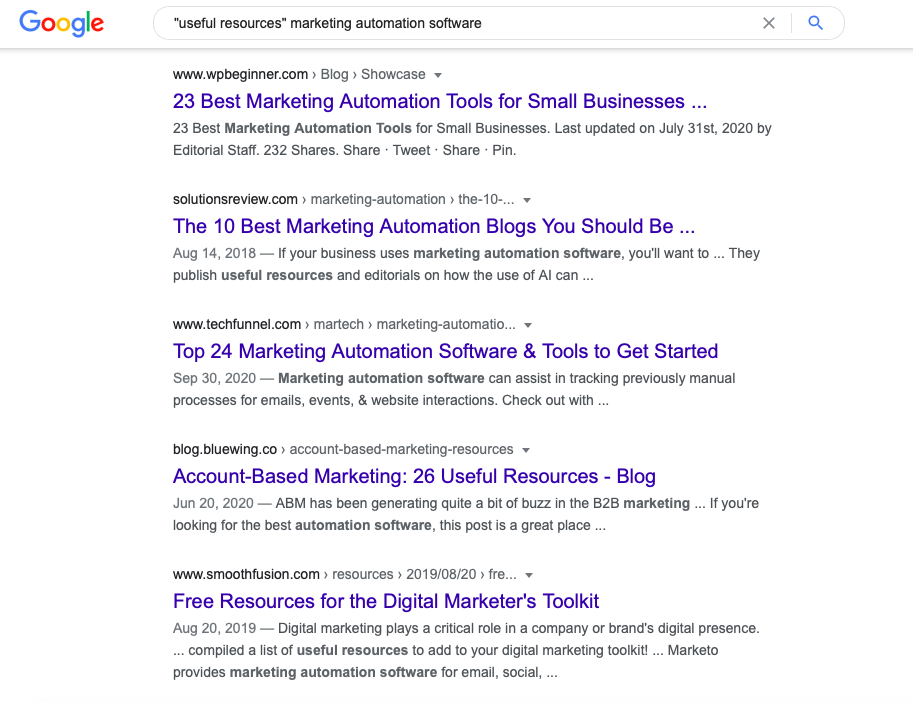

Skyscraper Content
Coined by Brian Dean at Backlinko, skyscraper content is a digital marketing strategy that simply one-ups the No. 1 ranking link on Google. While it sounds easy, Dean notes that it’s time-consuming but worth it. Here’s how skyscraper content works to create backlinks to your website:
- Search for a keyword. For example, “How to get good backlinks for SEO” is a relevant term.
- Note the top-ranking article. For this keyword, Dean’s How to Get High Quality Backlinks in 2020 (7 New Strategies) is in the top spot. This is likely a combination of a higher number of relevant keywords and backlinks plus brand recognition.
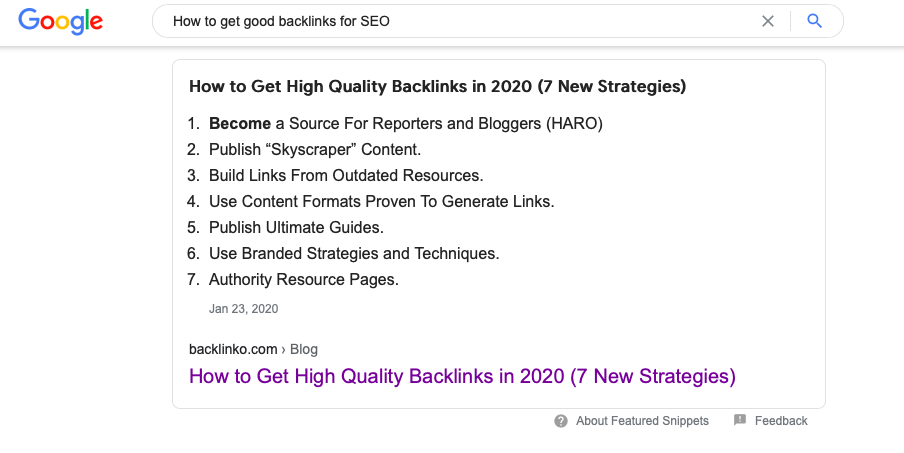

- “Create a piece of content that’s 5-10x better than what you just found.”
- To get the most out of this new content, promote it across all your marketing platforms. Send it in an email marketing campaign, post it on social media, ask for shares, and so on.
Testimonials and Case Studies
Most digital tools and services have a webpage for testimonials, reviews, or case studies. If you have a positive experience with a tool or service that you use regularly, offer to write about it. They’ll likely link back to your website and increase your SEO ranking.
The Ultimate Strategy
Going back to influencer marketing, this backlinking strategy makes you the influencer. When you link to external content, why do you do it? It’s comprehensive, intelligent, and helpful. It might include actionable tips and/or long-term strategies. It’s easy to read, and it creates solutions to pain points. In fact, it seems like the ultimate guide.
Probably because it is.
“Ultimate” and “definitive” guides fall into the same category as “the only guide you’ll ever need” and “the comprehensive beginner’s guide.” These big books of knowledge choose the right keyword to market their product, and it works. It positions them as an industry thought leader, and people click — and link.
Again, this isn’t an easy feat. These guides are well over the average blog word count, maxing out between 3,000 to 5,000 words. If you can implement this strategy into your content marketing calendar, expect the backlinks to roll in.
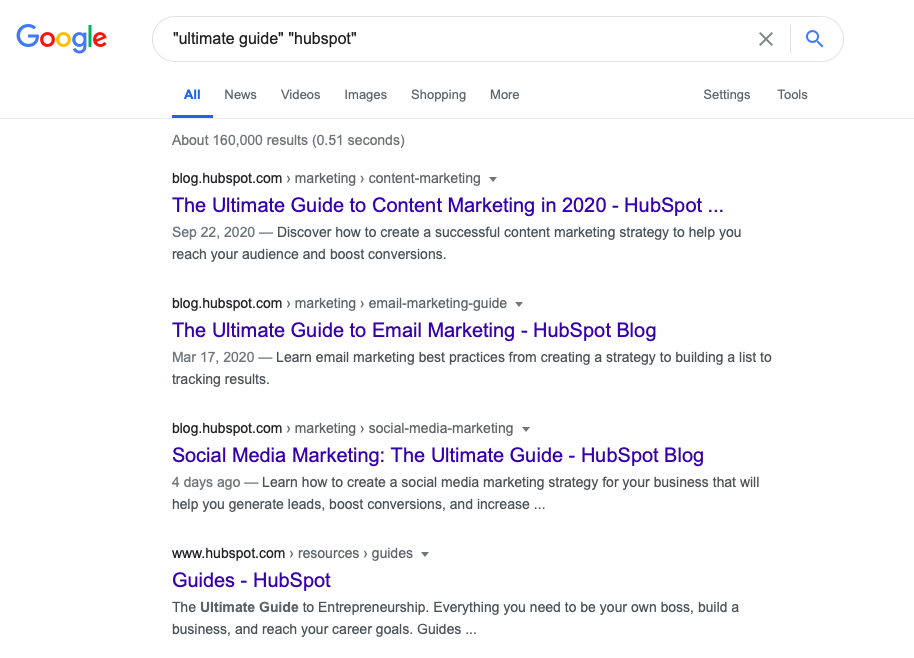

Backlink Tools for SEO
If you’re looking to improve your link-building strategy and increase backlinks for SEO, look no further than these handful of go-to digital marketing tools.
Free Backlink Checker by Ahrefs
Touting the second most active web crawler after Google — an incredible claim to fame — Ahrefs Backlink Checker can be searched by exact URL, path, domain, and subdomain, depending on the free or premium versions, creating a complete backlink profile of any site.
Ubersuggest
One of the most used backlink tools for SEO is Ubersuggest, which was acquired by digital marketer and founder of Kissmetrics Neil Patel. This digital marketing tool allows you to search by exact URL and domain with and without its subdomains. It also offers advanced link filtering and displays the domain score, backlinks (specifying nofollow links), referring domains, and organic monthly traffic.
“From total link count to .edu and .gov links to … the exact number of unique referring domains,” Ubersuggest is a must-have tool for your link-building strategy.
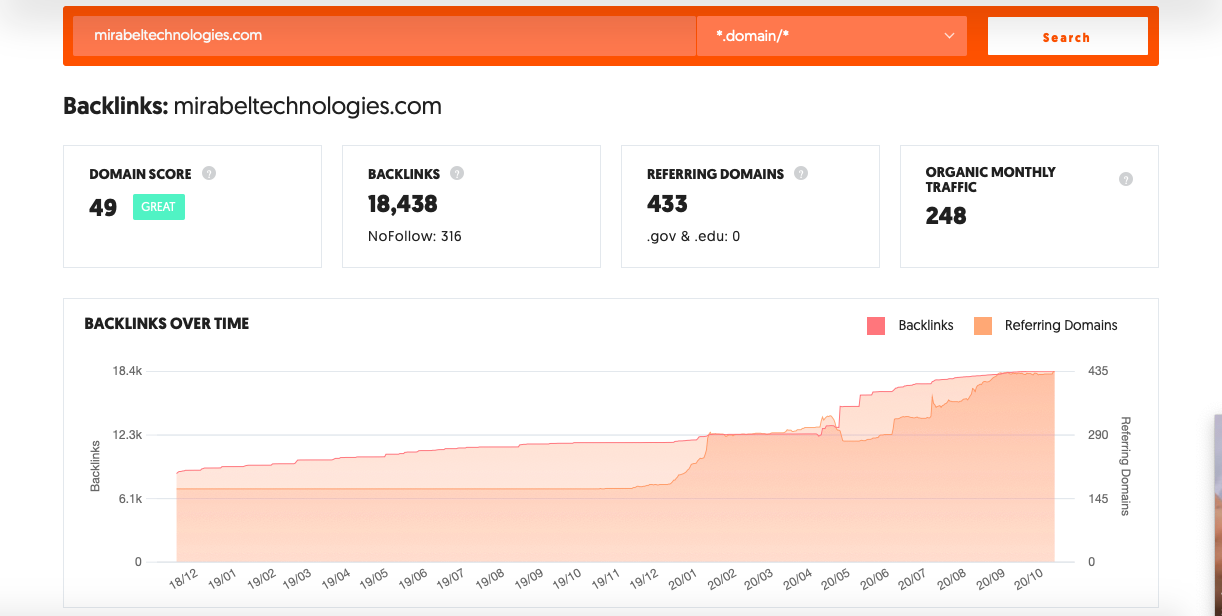

Link Explorer by Moz
Link Explorer offers the basic domain and page authority checker, but it digs deeper by displaying the Spam Score of backlinks and analyzing anchor text. It even offers Link Intersect, a link-building subtool that allows you to see who’s linking to your competitors.
As a disclaimer, you must create and verify a Moz account to use the Link Explorer, but with access to almost 41 trillion links, it’s worth the short process.
Link Building Tools in SEMrush
The suite of Link Building tools in SEMrush is a great way to increase backlinks to your site. The Backlink Analytics Overview shows off Domain Authority Score, referring domains, new and lost backlinks, monthly visits, and keywords. This digital marketing tool takes it a step further by categorizing the referring domains by industry and sorting them by authority score. SEMrush also reports the top anchor text keywords, displays the types of backlinks (text, image, form, and frame), and organizes the link attributes (dofollow, nofollow, sponsored, and UCG).
The subtools include a Backlink Audit, Link Building Tool, and Bulk Analysis. If you’re willing to pay for a subscription to their suite of website tools, SEMrush is an incredible tool for your link-building strategy.
TheHoth
If you’re looking for SEMrush power for free, this link analysis tool is powered by the same company and shows off “the top backlinks pointing to a specific domain.” This free backlink checker allows you to search by exact URL and domain with and without its subdomains.
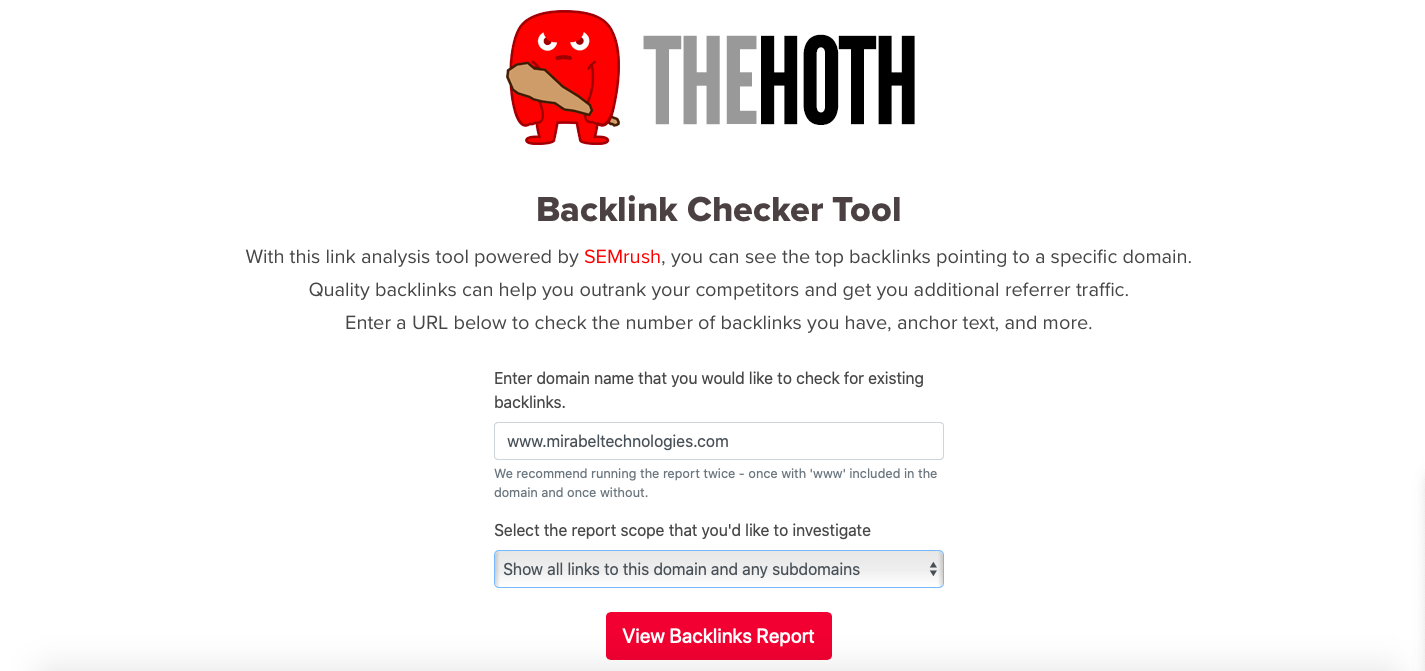

Its Backlink Metrics display total external backlinks, total referring domains, dofollow backlinks, and referring IPs. It breaks the metrics down by URL, anchor text, and nofollow backlinks, and then scores them using SEMrush methodology. Here’s how we did for our main website:
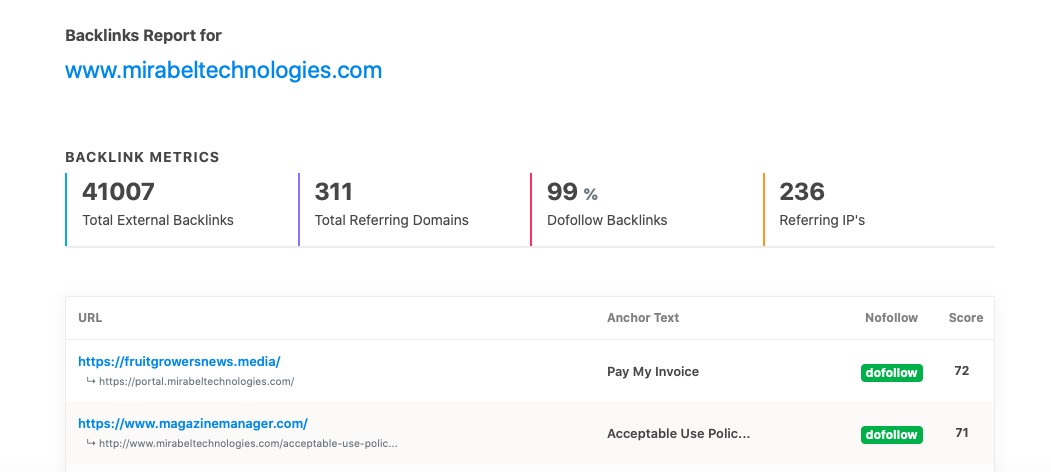

Many people ask, “How do I add backlinks to my website?”
The answer isn’t simple, but focusing on a link-building strategy is the best way to create backlinks and increase SEO for your website. By understanding the examples of backlinks and using the best tools for link-building, you’re well on your way to conquering search engine algorithms and building your domain authority.
SEE FOR YOURSELF
Watch an overview to learn how B2B marketing automation by Mirabel Technologies can help you increase traffic, optimize your funnel, drive more leads, improve conversions, and boost ROI — at a price you can afford!

